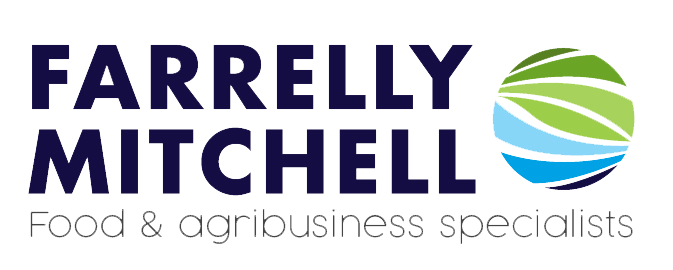Fallowing – the practice of leaving land fallow for a period to allow it to regenerate and conserve nutrients – declined in popularity across many cereal-growing regions with the advent of synthetic fertilisers and herbicides. However, climate volatility is driving renewed interest in fallowing as a climate adaptation tool. Successive droughts in North America, northern and southern Africa, and elsewhere have reminded growers that rainfall, not nitrogen, is the primary constraint on dryland output. At the same time, agri-input costs have escalated, and resistance to widely used herbicides is spreading. These pressures have created a window for a technology-enabled reboot of land fallowing.
Modern fallow land management practices combine moisture sensing technologies, remote scouting, and optical green on brown spot spraying to improve water retention and limit inputs. Preliminary evidence suggests the approach could potentially reduce herbicide spend by up to half, raise soil water storage, and generate continuous datasets that insurers and carbon sequestration programmes value. This article examines the operational building blocks, strategic implications, and economic logic of land fallowing.
Why fallowing land is back on the agenda
Fertilisers and herbicides were once a cheap enabler of chemical fallowing. Not anymore. In Illinois, pesticide expenditure for a corn hectare quadrupled from roughly USD 80 in 2000 to USD 320 in 2022 and is projected to climb further in the coming years. At the same time, agronomists are recording a sharp uptick in herbicide resistance. Weeds such as kochia, Russian thistle, and ryegrass are increasingly resistant to glyphosate and ALS inhibitors. These weeds are expanding across semiarid zones, forcing growers to stock several herbicides and perform extra spray passes. Each additional pass not only inflates variable costs but also disturbs residue cover and accelerates soil water loss.
Climate risk compounds the problem. In 2021 the northern Great Plains endured their driest season in 30 years, with winter precipitation 40–60% below average. Farms relying on conventional broadcast spraying and shallow tillage failed to store enough moisture to establish spring wheat. By contrast, fields managed under strict no-till fallow with heavy residue carried higher soil water and harvested viable, if modest, crops. The contrast iterates findings documented decades earlier: dryland wheat yields correlate more closely with stored soil moisture than with seasonal rainfall or temperature extremes.
Unpacking the precision stack: sensors, analytics, and spot spray robotics
Effective modern fallow land management typically benefits from a multi-layered technology system capable of maximising precipitation storage and minimising input leakage. Soil moisture probes placed at key depths are needed to measure water profiles in real time. Feed from these probes is combined with weather station data to forecast evapotranspiration and the likelihood that weeds will germinate.
Overlaying the hardware is an analytics layer that converts raw probe, weather and spray data into decision dashboards. Operators can see their remaining soil water budget, projected weed emergence cycles, and the financial cost of each spray round.
When potential problems are indicated, the system can trigger alerts and even activate drone or satellite surveillance to capture vegetation maps with a view to guiding sprayers to specific problem spots. Once deployed, sprayers, fitted with green-on-brown sensors, can trigger spray nozzles where chlorophyll is detected.
Field evidence points to the potential value of this approach. Studies in the Pacific Northwest demonstrate that wheat–fallow rotations used in combination with spot spraying can reduce herbicide use volumes by roughly half while achieving the same level of weed control as blanket applications.
Operational savings are equally material. By reducing passes, growers can cut diesel use and labour hours, saving roughly five tractor hours per 100 hectares and two refuelling stops, while reduced transport requirements also lower machinery wear rates. Crucially, digital monitoring and data collection create verifiable evidence of sustainable farming practices and improved resource management.
Carbon programmes are likely to reward reduced fuel and nitrous oxide usage. At the same time, some insurers have begun offering premium discounts of up to 10% for farms that supply continuous soil moisture histories, providing farmers with more revenue generation and cost-saving opportunities.
Because optical spot sprayers let growers control weeds early with minimal soil disturbance, they make land fallowing more practical and cost-effective. A 10 year comparison study in Colorado found that no-till fallow stored an average of 188mm of moisture over the autumn, winter and spring periods versus 111mm for conventionally tilled fallow. This translates into a 48% versus 32% precipitation storage efficiency.
The capacity to improve precipitation storage rates carries a measurable yield dividend. Long-term statistical correlations indicate that every 10mm of additional soil water at planting may lift winter wheat yield by ~0.2 t/ha, equating to USD 50 at current futures prices. When this increased revenue from higher yields is added to the operational savings, the net margin gain can be significant.
The economics of fallowing land
The economic performance of land fallowing is far from absolute, and is highly conditional to regional geography and meteorological trends. It often underperforms other regenerative practices such as intensive rotations with cash crops or cover cropping in terms of immediate revenue generation. By its nature, fallowing involves a period without a harvestable cash crop, forgoing revenue for that specific cycle. While some fallowing practices, like green fallowing, may provide modest income through livestock grazing or hay production, it often fails to make up the shortfall. By contrast, many other regenerative practices, such as cover‑cropping, maintain cash flow, but often deliver slower soil health gains, may consume soil water, may require additional agri-input outlays, or result in reduced yields of the primary crop.
Other financial hurdles also exist. The cost of the precision sprayers and moisture probes required for effective fallow management requires significant upfront capital investment. This can cause short‑term liquidity risks, especially when accompanied by lost revenue from crop sales.
Behavioural inertia also compounds the problem, as producers may be reluctant to adopt unfamiliar practices that disrupt established farming routines and financial planning cycles. Similarly, where land is leased, short-term tenants lack the sufficient incentives to invest in soil‑building measures whose dividends accrue in the long term.
Closing the adoption gap
Despite compelling arguments and proven benefits, the business case is highly context‑dependent and often hinges on the availability of subsidies and extreme weather conditions before being financially viable. Producers should benchmark the opportunity cost against middle-ground options such as rotational strategies, cover-cropping strategies, partial-season cropping and deficit irrigation practices. These options may deliver similar environmental benefits while maintaining some income, potentially making them more economically viable than complete fallowing.
Significant barriers also persist, as the capital requirements for operating a technology-enabled fallow system may be excessively onerous for small and medium-sized growers who turn over less than USD 1 million annually. Skill shortages also limit implementation. Operating and understanding precision agriculture and remote sensing systems requires a deep level of insight and a high degree of digital proficiency that may prove challenging for some operations.
Training programmes and extension services that cover the skills gap are emerging, but coverage is patchy. This is particularly true in African and Middle Eastern drylands where fallowing could deliver the greatest impact. Governments could accelerate adoption by subsidising equipment purchases through low-interest loans, offering tax credits, investing in digital infrastructure, and providing digital literacy programmes. Similar programmes for renewable energy integration have already proven successful in adjacent domains.
When paired with precision agriculture tools, land fallowing can be a strategic asset that lowers input costs, stores more water, and generates monetisable data. However, this approach is no panacea, where fallowing is attempted without active weed control or inadequate moisture monitoring and management, results can be disappointing.
Successful adoption requires capital, technical expertise, and supportive policy. Nevertheless, evidence from the Pacific Northwest and the High Plains shows that, given the right circumstances, operational gains are achievable and this approach can merit serious consideration.
At Farrelly Mitchell, our digital agriculture specialists combine strategic, technical, and commercial expertise with practical field experience to help agribusiness owners and managers to address complex challenges and capitalise on emerging opportunities. We work directly with clients to lower costs, strengthen yields and enhance ESG credentials. In doing so, our clients benefit from price premiums and improved access to sustainability-linked financing. Whether you need to evaluate next-generation technologies, integrate new solutions and practices, or develop a scalable strategy, our tailored advisory services can help. Contact our experts today to discuss how we can support your business’ continued growth and profitability.














